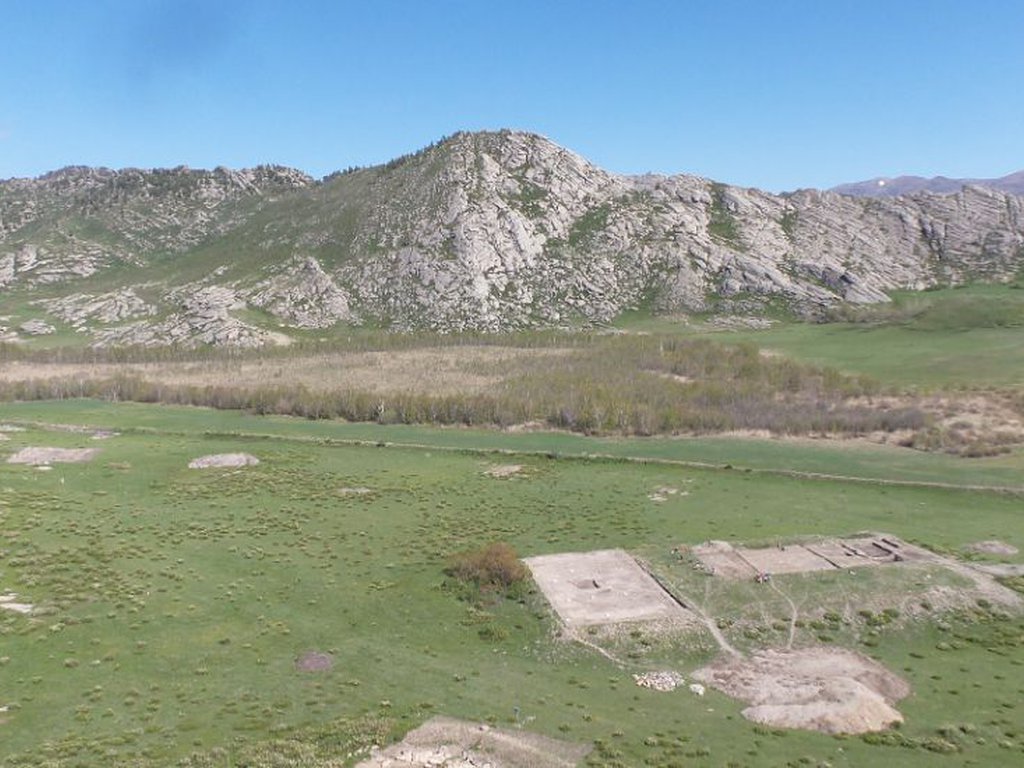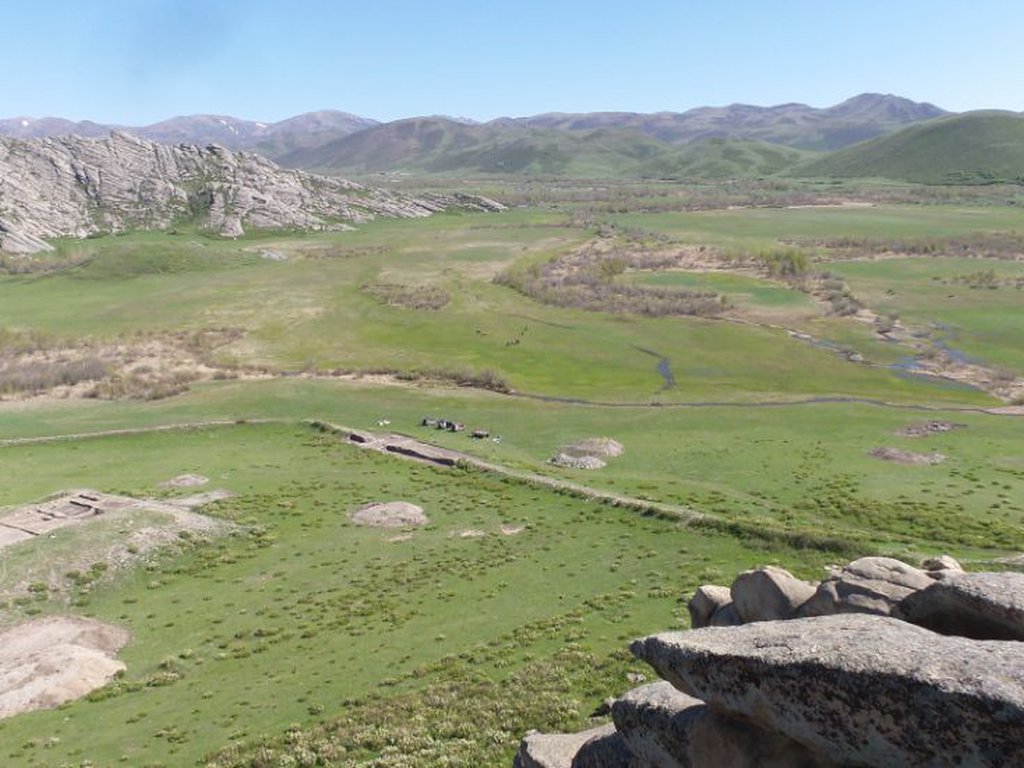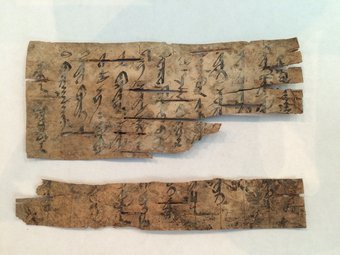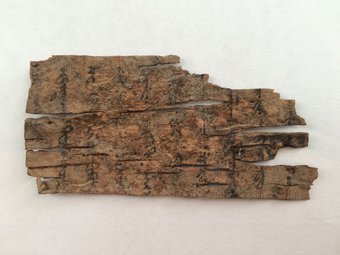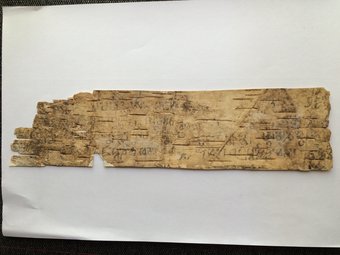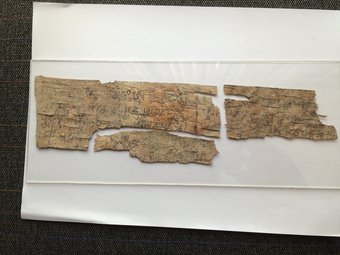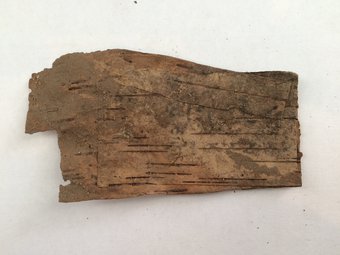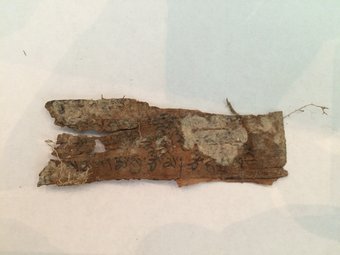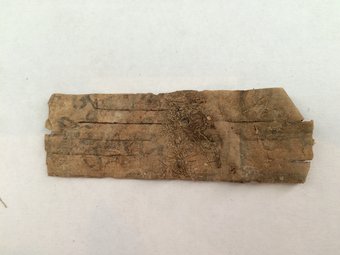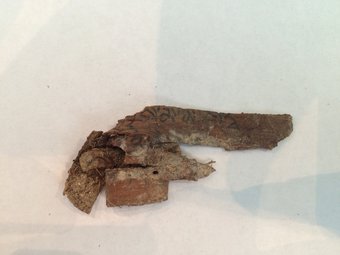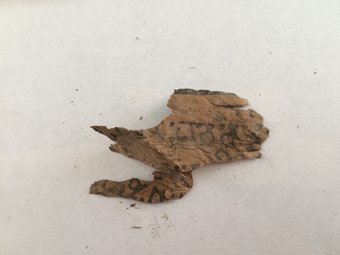Ablai Kit. Паспорт объекта

Full description
Name: Ablai-kit (oir. Ablaiin keyid). The names Ablaiin süm-e were also used. Apparently, these names are unofficial. The official name was not preserved in the sources.
Site type: Remains of a fortified Buddhist monastery (oir. Šibētü süm-e).
Founder: Ablai-taiji, an Oirat aristocrat of the 17th century from the Khoshut clan. See section Thematic maps. He was the youngest son of a major Khoshut aristocrat Baybagas. Ablai's mother, daughter of the Torgut Kho-Urluk, is mentioned in the Oirat sources under the name of Saykhan-Dzui-khatun. To learn more about Ablai's life, see the Article within the project.
Time and circumstances of foundation: Ablai-kit was founded in 1652. The time of the foundation of the monastery is known from a number of sources. "Moonlight", whitch is the biography of the outstanding Oirat Buddhist figure, who was Ablai-taiji's half-brother, Zaya-pandita Namkha-Jamtso, informs us that Ablai invited Zaya-pandita to conduct the consecration ceremony in the winter of 1657. This means that the construction of Ablai Kit was generally completed in three years. According to the source, a thousand monks attended the ritual of consecration of the sume. This figure, most likely, is a typical exaggeration for Buddhist works, but it gives reason to assume that the consecration of Ablai's summe was a real event for the Buddhist of Irtysh region.
Important information about the construction of the monastery is contained in the article list of Fyodor Baikov, who is a Russian diplomatic envoy to China. The initial stage of construction coincided with the arrival of the embassy Baikov, who spent several months at Ablai's headquarters from late autumn of 1653 to early spring of 1654 and witnessed the construction of Ablai Kit. The construction of the monastery coincides in time not only with the arrival of Baikov, but in general with the beginning of Ablai-Taiji's cooperation with the Russian authorities in the development of diplomatic ties and trade between Moscow and the Qing Empire. In the same years, Ablai subjugated the Mongol tribe of Sunnis, whose rulers revolted against Manchus and fled from southern Mongolia in 1646 to the west, to the lands of Altyn-khans. At the same time, or a little earlier, Ablai conducted military campaigns against Bukhara, as evidenced by the presence of captured Bukhara farmers in his headquarters. Moreover, his ambassador Bakhta, in negotiations with the Tyumen governor, reported that Ablai "brought glory to all Kalmyk ulus, Bukhara and China ...". Probably, in this case, there is a diplomatic reception, but in general there is a reason to assume about Ablai’s activation in the middle of the 17th century, about his claims about leadership in Khoshut’s, or, perhaps, in Oirat’s environment. To learn more about the history of the Ablai kit, see the section of Article within the project.
Period of use: 1652 – early XVIII century. The considerable resources that Ablai invested in the construction of the monastery, a significant collection of books and luxurious interior decoration indicate that Ablai-kit was for some time a significant Buddhist center in the Irtysh region. We do not know anything specific about the history of Ablai-Kit, after he was first captured by Ablai's brother Ochirtu-Taiji, with whom he had a hostile relationship, and then returned back to Ablai. It is likely that after Ablai's migration to Yaik, and then his capture by Kalmyk’s Khan Ayukoy, the monastery passed under the patronage of Ochirtu-Setsen Khan. Sources are also silent about what happened to Ablai-Kit after the death of Ochirtu-Setsen-Khan and the escape of Khoshuts to the Volga and Kukunor. Probably, all the former Khoshut possessions in 1676 came under the control of Galdan-Boshoktu-khan. The monastery for some time could be used by monks as a place for meditation, which was reflected in its historical name - kit (hiyd), that is, a secluded monastery.
Russian soldiers who explored the monastery in the 30s of the 18th century, which is a little more than five decades after the collapse of the Khoshut house in the Irtysh region, found it only in a dilapidated state. At the same time, the library of the monastery, as well as elements of the interior decoration, were still in a satisfactory condition. Ablai-Kit came to its final decline during the 18th-19th centuries as a result of its systematic plundering by the local population. Most likely, Ablai-Kit fell into desolation gradually, together with the process of shifting the center of the Dzungar Khanate to the region of Semirechye and East Turkestan, which took place at the beginning of the 18th century.
Main functions: Temple, Buddhist stationary monastery, workshop, school. The author of the “Moonlight” exclusively uses the word sume when talking about the monastery built by Ablai. He does not use the term kit (hiyd), which eventually became entrenched in the monastery. There might be some sense in this discrepancy. In Mongolian Buddhism, the term sume was taken to mean a monastery in which the monks could not live on a permanent basis, but came at a certain time to conduct calendar rituals or services. The term hiyd meant a hermitage, which was inhabited by a small number of monks who practiced Buddhist practice in seclusion. Although these terms were not used strictly, and they could be interchanged, it can be assumed that the Ablai monastery, originally created as a place for conducting regular rituals of the nomadic Zaya-pandita monastery, could eventually turned into a desert hermitage for a small group of monks.
Religious affiliation: Buddhism of the Tibetan Gelukpa tradition (Tib. Dge lugs pa), or the yellow hat tradition (Tib. Zhwa ser), founded by the prominent Buddhist thinker Je Tsongkhapa Lobsan-Dakpa (1357-1419). Gelukpa is the most widespread Tibetan tradition that had spread in the Mongol and Oirat milieu since the end of the XVI century. See the section of Thematic Maps
Main center of attraction: Central Temple and Library. So, according to the description of Miller and Gmelin, who visited the Ust-Kamenogorsk fortress in 1734 and sent a small detachment of soldiers led by a police officer to examine Ablay-kit, a ruined library was found on the territory of the main church. The remaining manuscripts, according to them, could not be taken away even by 10 horses.
Plan: Pavilion, temple, workshop, residential building, fortress wall with the main southern and secondary eastern entrances. Four buildings of different sizes were built inside the monastery fence. The main temple, measuring 45x20 m, stood on a high platform 80x45 m, with a high staircase adjoining it on the south side. On the platform, in addition to the temple itself, which had two tiers, something like a pre-temple pavilion was built. To the west of the main temple there was a small workshop, and to the northeast there was a fairly spacious dwelling for the monks. The walls of the temple complex were probably tiled. Inside the pavilion, temple and living quarters there were wooden columns on stone foundations; there was a stove heating; the fortress wall was built with massive rough stones with backing. See the section of drone shots.
Features of the landscape: The monastery was adjacent to a rock mass, which served as a natural protection from the western and northern sides. In the higher part of the monastery there is a small lake with fresh water. There is a small grove behind the eastern wall. A kilometer southeast from the monastery behind the rock massive there is a lake of Sadyrkol, which is the first of the five Sibinsky lakes. See the section of drone shots.
Present state: Only the foundations of the buildings, part of the fortress wall, the foundations of the columns and furnaces remained from the monastery. In 2018, archaeological excavations were carried out on the territory of the monastery. See photo gallery.
Threats: There is a small chance that the site could be plundered by illegal archaeologists; there is a threat of destruction of the remaining structures by barbaric tourists or vandals.
The nearest settlement: The site is located 1.5 kilometers southeast from the Algabas village which is in the Ulan region of East Kazakhstan. The settlement is small in size (about 100 yards), there is a school, a post office and several small grocery stores. See the Satellite Map section.
Site objects: The recreation center "Sibiny" is located in a kilometer on the SEV. See the Satellite Map section.
Road: through the village of Algabas there is a hard-surface road R-158, which is actively used by tourists visiting recreation centers near the Sibinsky lakes. A dirt road leads to the site itself from the village of Algabas, wading through Ablaiketka (Beshka) river and wetlands. Travel is difficult in the late spring. There is a hiking trail from the Sadyrkol lake.
Artifacts and manuscripts: found samples of Buddhist art and birch bark Oirat manuscripts, as well as surviving sheets of Buddhist canonical works in Tibetan and Oirat languages are kept in the collections of the Institute of Oriental Manuscripts of the Russian Academy of Sciences (St. Petersburg) and the Regional Museum of Ust-Kamenogorsk; most of the artifacts discovered in the 18th-19th centuries were kept in the Kunstkamera and were irretrievably lost as the result of the fire. See section of Manuscripts.
Assessment of the current state. Ablai Kit today has the status of a sacred site of regional significance, although according to the degree of preservation, its historical, cultural and religious significance, it should be included in the number of shrines of the national level. The monument is under the state protection.
Excavations of the Ablaykit monastery were resumed in 2016 by the initiative of the akim of East Kazakhstan Danial Akhmetov within the framework of the document approved by him, entitled "Program for the development of scientific research in the field of archeology in East Kazakhstan for 2016-2018." The program is aimed at historical and archaeological research of historical and cultural monuments of the region. The customer of the archaeological work on the monument is the PSI "East Kazakhstan Regional Institution for the Protection of Historical and Cultural Heritage", and their executor was the LLP "Archaeological Expertise".
Investment Recommendations: Ablai Kit is one of the most attractive tourist and pilgrimage sites in all of Kazakhstan. Ablai-kit is well known outside of Kazakhstan, mainly in the Russian regions adjacent to Kazakhstan. It attracts both tourists on the Sibinsky lakes and those who come with a specific purpose to see this particular monastery. This is not surprising, since from all of the Buddhist sites in Kazakhstan, Ablai-Kit is the best preserved, and remains of the former splendor of the monastery still allows to imagine its scale. Ablai Kit could become the main link of tourist routes related to the Buddhist heritage of Kazakhstan, the Kazakh-Oirat wars or the Silk Road, since Ablai Kit was conceived as an important logistics point for the trade route from China to Russia. In order to do it archaeological research must be completed in Ablai-Kit. After that, one can invest in a partial restoration of the former appearance of the monastery, which was preserved in the sketches of Peter Simon Pallas. Future investors need to invest in building the road section from the nearby village of Algabas and to improve the territory: lay trails on the territory of the monastery and on the nearby mountain spurs. From the highest points of the monastery, a magnificent view of the adjacent plain opens up. The route can pass by the lake and along the remains of the fortress wall. Walking around the entire territory of the monastery can take up to 4-5 hours and requires a certain physical readiness, and therefore, it is important to build pedestrian paths and stairs.
In the reconstructed building of the main temple, it would be possible to accommodate a small exhibition hall, where samples of Oirat and Tibetan Buddhist manuscripts, including the sheets from Buddhist Ganjur, or the Tibetan collection of Buddhist canonical works found here and now stored at the Institute of Oriental Manuscripts of the Russian Academy of Sciences can be displayed. Moreover, there can be also birch bark letters and other artifacts in their original form or in the form of replicas. In addition, the exhibition could tell visitors about the history of Oirats in East Kazakhstan, their Buddhist culture, as well as how the findings in this place influenced the development of European oriental studies.
Photo gallery
Map
Manuscripts
Materials
All materials are available at the following link


